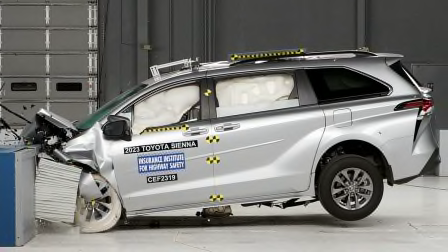GM Wants to Go All-Electric by 2035
While the automaker called the goal only an 'aspiration,' it's also a major part of the company's new environmental commitment

General Motors announced today that it plans to be carbon-neutral by 2040 and signaled that it would like to have an all-EV lineup by 2035.
The announcement from GM—the largest automaker in the U.S.—follows similar pledges from other automakers, though GM’s timeline is more aggressive than most. Volkswagen and Nissan have said they’ll be carbon neutral by 2050, Volvo says it will sell only EVs and hybrids by 2025, and the luxury automaker Bentley has pledged to be all-EV by 2030. Tesla is already there, with a full fleet of battery-powered vehicles. The same will be true for startup brands such as Rivian and Lucid Air.
“This announcement from GM shows that momentum continues to build for an electric revolution that will benefit consumers and the environment,” says Chris Harto, senior policy analyst at Consumer Reports. “There is growing consumer interest in electric vehicles, and strong consumer benefits from owning one.”
EVs Make Financial Sense
Following through on full electrification would also make good business sense, because new regulatory requirements worldwide will limit sales of new vehicles powered by combustion engines. California and Massachusetts will require that all new passenger vehicles sold by 2035 meet zero emissions standards. They join 15 countries—including multiple European Union countries, the United Kingdom, Canada, China, Costa Rica, Egypt, India, Israel, Singapore, Sri Lanka, and Taiwan—with similar coming phaseouts.
“This is very much adding PR to stuff that is already—or will about to be—required,” says Chelsea Sexton, an independent consultant who was involved with the launch of GM’s first EV, the EV-1, 25 years ago. “That’s not inherently a bad thing, as long as we’re all realistic about it.”
An EV lineup also would position GM to meet market trends that CR has identified. A recent CR survey found that a majority of U.S. drivers are open to owning an electric vehicle at some point in the future. And CR recently found that lifetime ownership costs for the most popular electric vehicles on the market today under $50,000 are typically $6,000 to $10,000 less than the best gas-powered vehicles in their class.
Friedman says that GM should show consumers and the market that it's serious about saving them money on fuel, improving air quality, and solving climate change by supporting strong fleetwide greenhouse gas emissions standards that would cut new-vehicle emissions by at least 60 percent by 2030. Along with other automakers, GM had supported the Trump administration in its fight against California’s ability to set its own stricter fuel-economy and emissions standards, although the automaker reversed course after the election. CR recently asked the Biden administration to work quickly to undo recent rollbacks that weakened emissions and gas mileage requirements.
The automotive industry also needs to focus on the near-term if it’s serious about climate change, Sexton says. “Putting everything off for another 15 years or so isn’t helpful in where we need to be going,” she says. “I think announcements are good, but it’s long past time to start adding deadlines to the stuff that people have been talking about as inevitable.”
It's About Factories, Too
GM says it worked with the Environmental Defense Fund (EDF), an environmental advocacy group, to develop its plans. "EDF and GM have had some important differences in the past, but this is a new day in America,” EDF's president, Fred Krupp, said in a press release. “One where serious collaboration to achieve transportation electrification, science-based climate progress and equitably shared economic opportunity can move our nation forward.”
In addition to vehicle electrification, which the company says should account for three-quarters of its efforts to go carbon neutral, GM also announced it will accelerate its plans to fully power all of its plants worldwide by renewable energy by five years—by 2035—and will reduce emissions in its supply chain as well. The automaker will use carbon offsets “sparingly.”
The automaker also says it plans to build out charging infrastructure powered by renewable energy, and do better work promoting EVs to consumers—an effort that’s been lacking in the past—as well as “maintaining high-quality jobs.” That last one could be a sticking point, considering that EVs are simpler to build and easier to maintain than their gas-powered counterparts.
EVs are only one part of a broader strategy necessary to reduce greenhouse gas emissions, which also must get people out of their private vehicles in the first place with better public transit and safer opportunities for walking and biking, Sexton says. “Electrifying everything is great, but we also need to focus on pedestrian safety and reducing vehicle miles traveled, especially in urban areas,” she says. “None of this happens in a vacuum.”




















